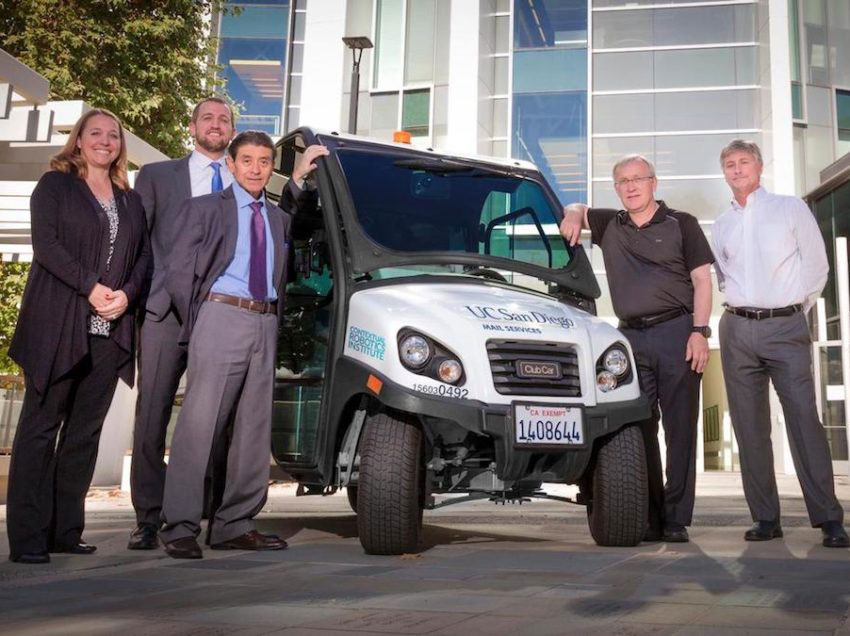Self-Driving Vehicles to Make Debut on UC San Diego Roads in January
The University of California San Diego will turn its campus into a test bed for self-driving vehicles starting in January 2018.
The project will be implemented in stages. The first will be to put self-driving mail delivery carts on the road. The carts will run on algorithms developed by UC San Diego researchers who are part of the Contextual Robotics Institute. Backup drivers will initially ride in the carts as a safety measure.
“We are trying to solve the ‘last mile’ problem when autonomous vehicles get off the freeway and onto crowded neighborhood streets,” said Henrik Christensen, director of the Contextual Robotics Institute at UC San Diego, who is leading the project.
The campus is like a small city, Christensen added, with about 65,000 students, faculty and staff coming together every day and vehicles, bikes and pedestrians sharing the same space. The project is a partnership with Integrated Procure-to-Pay Solutions, a unit of UC San Diego Business and Financial Services. “We are turning the campus into a living laboratory,” Christensen said.
He will announce details of the project during the Contextual Robotics Forum Friday, Oct. 27, on the UC San Diego campus. (Same day registration is available.)
In the future, the project’s goal is to incorporate new technologies being developed at UC San Diego and broaden the scope of the test bed. The Jacobs School of Engineering is a leader in advanced wireless technologies, and some of these could make their way into the mail delivery carts. For example, carts could be equipped with radar technology developed by electrical engineering professor Gabriel Rebeiz and his team. Another possibility: vehicle-to-vehicle communication technologies developed by a team led by Sujit Dey, who is an electrical engineering professor at the Jacobs School, director of the UC San Diego Center for Wireless Communications, and director of the UC San Diego Institute for the Global Entrepreneur.
Christensen and his team chose mail delivery as the first phase of the project because it’s exactly the kind of repetitive task that robots excel at. The self-driving carts will make 13 different stops at drop points on campus, where employees come to pick up mail and distribute it to specific departments. The stops are set to occur at specific preset times.
As a first step, researchers will purchase two Polaris Ranger carts. The vehicles will be equipped with a panoply of sensors for self-driving vehicles provided by Illinois-based Autonomous Stuff as well as an open source software package, which will be supplemented by algorithms developed by Christensen and his team.
The researchers’ initial goals are predicting pedestrians’ movements five seconds out and predicting when surrounding vehicles are going to stop. Researchers will also build a simulated environment that mimics traffic patterns on the UC San Diego campus.
Christensen and colleagues will also partner with cognitive scientists on campus, as well as the UC San Diego Design Lab, to study how pedestrians interact with self-driving vehicles.
Long-term plans include operating self-driving carts to ferry people from the new trolley stations that will open on campus in 2021 to medical facilities on the east side of the UC San Diego campus. Christensen also envisions early testing taking visitors from the Birch Aquarium parking lot to the aquarium’s entrance.
The initial costs for the project, $150,000, is covered by Christensen’s start-up research funding provided by the Jacobs School of Engineering.
